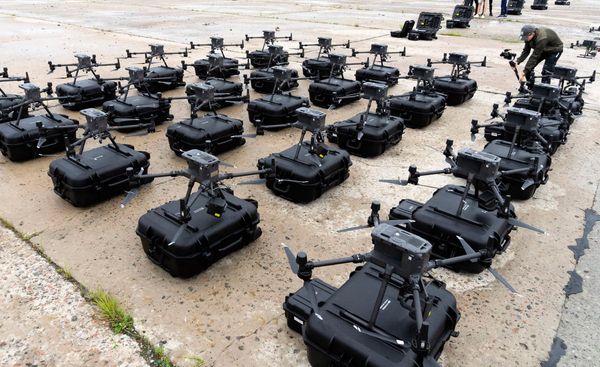Missions to the Moon have rapidly increased, and some are unique and groundbreaking, but not all of them work.
China's latest mission to the Moon, Chang'e 6, which reached its destination a few weeks ago, is on its way back from the Moon and is expected to land in Mongolia on Tuesday.
The mission is carrying samples from the far side of the Moon, which will be the first time ever humans have done this.
The far side of the Moon is often called the dark side of the Moon.
Don't turn on Pink Floyd yet though - it isn't actually dark, because it does get sunlight.
However, it is the side of the Moon that is always facing away from Earth.
It receives nearly the same amount of light as the near side of the Moon, the side that we see at night and which is always facing us.
For lunar missions, what makes it difficult to land on the far side of the Moon is the lack of line-of-sight, meaning you can't communicate directly with it.
Apollo 8, the first mission to go around the Moon, was the first to face the risk that - as humans went around this side - they would lose contact with Earth, a communications blackout.
If something went wrong, there would be no one to call or get help from.
With robotic missions, it means sending commands to slow and descend the probe is not possible.
To make it happen, China built a communication relay system around the Moon.
With satellites orbiting in a position such that they can send data and commands from the Earth to the satellite on the side of the Moon, it can then relay it to the missions on the far-side.
It is a huge technological achievement.
And a mission that extracts rock and samples is an even bigger deal.

How did China get here?
China became only the third country to land on the Moon in 2013.
In 2019, they landed on the far side of the Moon for the first time by any country, and in 2020, landed on the near side and returned samples back to Earth.
The far side is also different to the side we can see, and we are hopeful the samples that land on Earth on Tuesday will reveal some unique insights into the history of the Moon.
SpaceX's new rocket, Starship, which is in development and had its latest test a few weeks ago, was planning that on its first trip around the Moon there would be a group of tourists.
Japanese billionaire Yusaku Maezawa purchased the seats on the first flight in a project called dearMoon.
He selected eight others - artists and creators - who would be inspired by the views as they went around the far side of the Moon and see it up close
While a unique choice of people, the only other people to see the Moon up close are 24 NASA astronauts.
Having other people enjoy the beauty of space is inspiring. However, for unknown reasons, the dearMoon mission was cancelled. Starship will eventually go around the far side. Who will be on it, if anyone, remains to be seen.
What is clear, is that the dark side of the Moon will become a bit less mysterious.
- Brad Tucker is an astrophysicist and cosmologist at Mount Stromlo Observatory, and the National Centre for the Public Awareness of Science at ANU.







